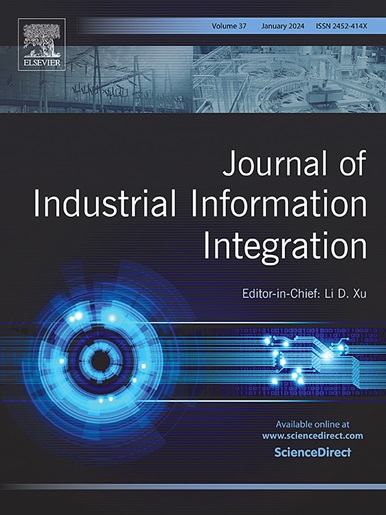Multi-grained teacher–student joint representation learning for surface defect classification
IF 10.4
1区 计算机科学
Q1 COMPUTER SCIENCE, INTERDISCIPLINARY APPLICATIONS
引用次数: 0
Abstract
Surface defect classification (SDC) plays a critical role in ensuring product quality within industrial systems. Surface defects are characterized by complex noise backgrounds, diverse defect types, and multi-scale defect shapes. Existing methods often struggle to effectively learn multi-grained defect information in such complex environments. This study introduces a Multi-Grained Teacher-Student Joint Representation Learning (MGJR) framework, which integrates both coarse-grained and fine-grained representation learning in a unified architecture. A ViT-based teacher network first learns holistic global features from defect-rich backgrounds. These features guide a student network enhanced with an Integrated Efficient Multi-Attention (IEMA) module and a Global-Local Attention (GL-Attention) mechanism, enabling the extraction and fusion of multi-scale features to preserve context while emphasizing local anomalies. Additionally, the anchor-guided training strategy (AGTS) serves as a consistency constraint, enhancing robustness by aligning the teacher’s stable coarse-grained signal with the student model’s fine-grained response under noisy inputs. The entire framework is optimized end-to-end using a unified loss that combines coarse-level guidance with task-specific supervision. Extensive experiments demonstrate that MGJR achieves 99.98% accuracy on the NEU-CLS dataset and consistently outperforms previous methods across multiple industrial benchmarks. The model remains lightweight, with 21.14 million parameters and 2.86 billion FLOPs. MGJR shows good performance in noisy conditions and other classification tasks. To demonstrate its practical effectiveness, this study built a wood surface defect dataset with 7 defect types and 2,654 images from real industrial settings. MGJR achieved top performance on this dataset, verifying its applicability in real-world.
面向表面缺陷分类的多粒度师生联合表征学习
在工业系统中,表面缺陷分类(SDC)对保证产品质量起着至关重要的作用。表面缺陷具有噪声背景复杂、缺陷类型多样、缺陷形状多尺度等特点。在如此复杂的环境中,现有的方法常常难以有效地学习多粒度缺陷信息。本研究引入了一个多粒度师生联合表示学习(MGJR)框架,该框架将粗粒度和细粒度表示学习集成在一个统一的体系结构中。基于vit的教师网络首先从缺陷丰富的背景中学习整体的全局特征。这些特征指导学生网络通过集成高效多注意(IEMA)模块和全局-局部注意(GL-Attention)机制进行增强,使多尺度特征的提取和融合能够在强调局部异常的同时保留上下文。此外,锚导训练策略(AGTS)作为一致性约束,通过在噪声输入下将教师的稳定粗粒度信号与学生模型的细粒度响应相匹配,增强鲁棒性。整个框架使用统一的损失进行端到端的优化,该损失将粗级指导与特定任务的监督相结合。大量实验表明,MGJR在nue - cls数据集上达到99.98%的准确率,并且在多个工业基准测试中始终优于以前的方法。该模型仍然是轻量级的,有2114万个参数和28.6亿FLOPs。MGJR在噪声条件和其他分类任务中表现出良好的性能。为了验证其实际有效性,本研究建立了一个木材表面缺陷数据集,其中包含7种缺陷类型和2654张来自真实工业环境的图像。MGJR在该数据集上取得了最佳性能,验证了其在现实世界中的适用性。
本文章由计算机程序翻译,如有差异,请以英文原文为准。
求助全文
约1分钟内获得全文
求助全文
来源期刊

Journal of Industrial Information Integration
Decision Sciences-Information Systems and Management
CiteScore
22.30
自引率
13.40%
发文量
100
期刊介绍:
The Journal of Industrial Information Integration focuses on the industry's transition towards industrial integration and informatization, covering not only hardware and software but also information integration. It serves as a platform for promoting advances in industrial information integration, addressing challenges, issues, and solutions in an interdisciplinary forum for researchers, practitioners, and policy makers.
The Journal of Industrial Information Integration welcomes papers on foundational, technical, and practical aspects of industrial information integration, emphasizing the complex and cross-disciplinary topics that arise in industrial integration. Techniques from mathematical science, computer science, computer engineering, electrical and electronic engineering, manufacturing engineering, and engineering management are crucial in this context.
 求助内容:
求助内容: 应助结果提醒方式:
应助结果提醒方式:


